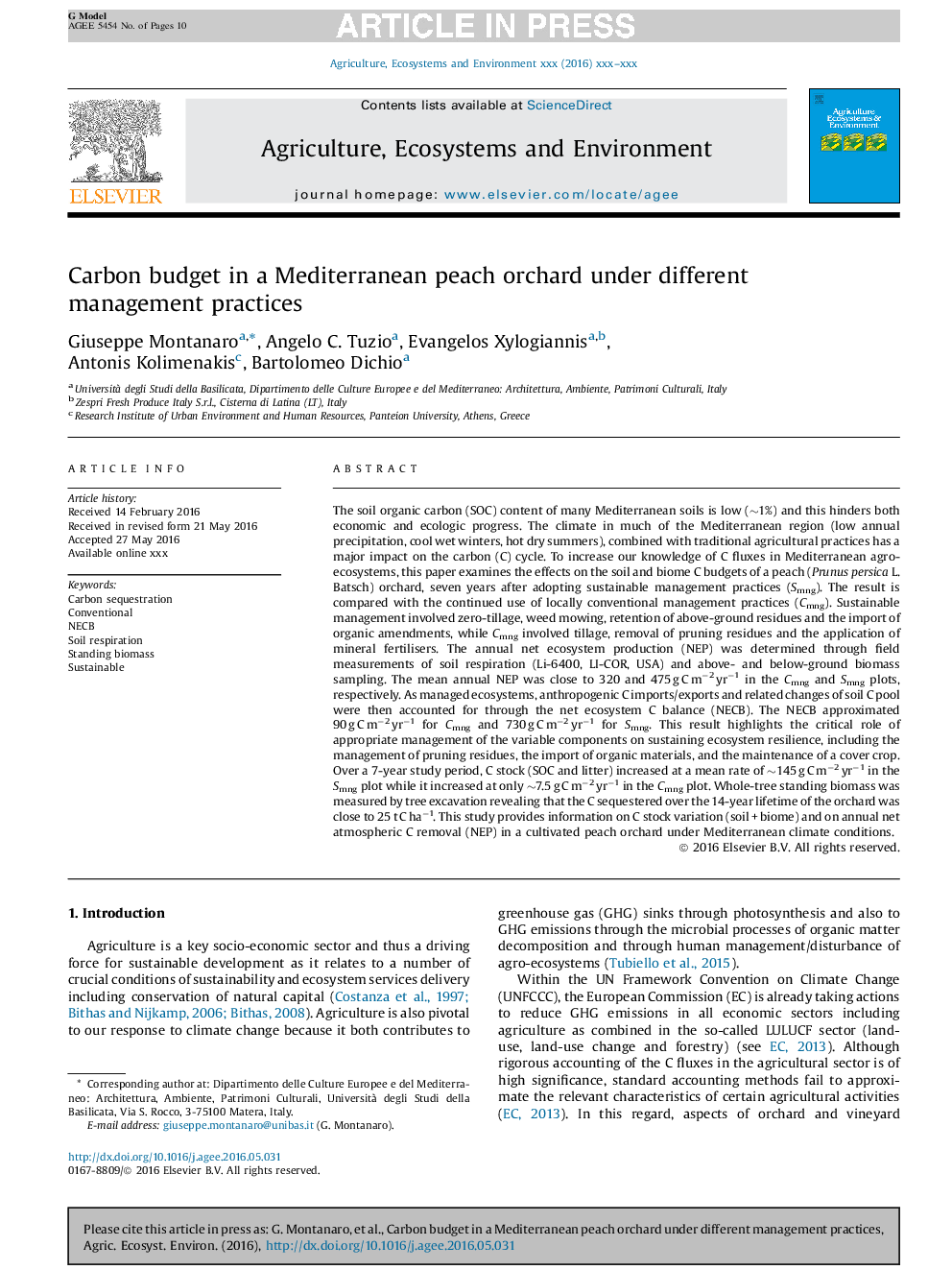| Article ID | Journal | Published Year | Pages | File Type |
|---|---|---|---|---|
| 5537961 | Agriculture, Ecosystems & Environment | 2017 | 10 Pages |
Abstract
The soil organic carbon (SOC) content of many Mediterranean soils is low (â¼1%) and this hinders both economic and ecologic progress. The climate in much of the Mediterranean region (low annual precipitation, cool wet winters, hot dry summers), combined with traditional agricultural practices has a major impact on the carbon (C) cycle. To increase our knowledge of C fluxes in Mediterranean agro-ecosystems, this paper examines the effects on the soil and biome C budgets of a peach (Prunus persica L. Batsch) orchard, seven years after adopting sustainable management practices (Smng). The result is compared with the continued use of locally conventional management practices (Cmng). Sustainable management involved zero-tillage, weed mowing, retention of above-ground residues and the import of organic amendments, while Cmng involved tillage, removal of pruning residues and the application of mineral fertilisers. The annual net ecosystem production (NEP) was determined through field measurements of soil respiration (Li-6400, LI-COR, USA) and above- and below-ground biomass sampling. The mean annual NEP was close to 320 and 475 g C mâ2 yrâ1 in the Cmng and Smng plots, respectively. As managed ecosystems, anthropogenic C imports/exports and related changes of soil C pool were then accounted for through the net ecosystem C balance (NECB). The NECB approximated 90 g C mâ2 yrâ1 for Cmng and 730 g C mâ2 yrâ1 for Smng. This result highlights the critical role of appropriate management of the variable components on sustaining ecosystem resilience, including the management of pruning residues, the import of organic materials, and the maintenance of a cover crop. Over a 7-year study period, C stock (SOC and litter) increased at a mean rate of â¼145 g C mâ2 yrâ1 in the Smng plot while it increased at only â¼7.5 g C mâ2 yrâ1 in the Cmng plot. Whole-tree standing biomass was measured by tree excavation revealing that the C sequestered over the 14-year lifetime of the orchard was close to 25 t C haâ1. This study provides information on C stock variation (soil + biome) and on annual net atmospheric C removal (NEP) in a cultivated peach orchard under Mediterranean climate conditions.
Related Topics
Life Sciences
Agricultural and Biological Sciences
Agronomy and Crop Science
Authors
Giuseppe Montanaro, Angelo C. Tuzio, Evangelos Xylogiannis, Antonis Kolimenakis, Bartolomeo Dichio,
